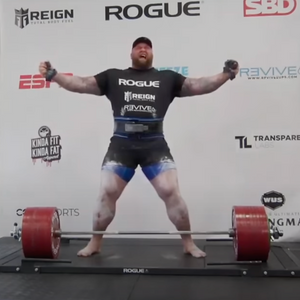
Deadlift World Record
The Deadlift World Record is a highly coveted achievement in the strength training community, symbolizing the pinnacle of human power and endurance. Over the years, the title of the world's heaviest deadlift has been fiercely contested by powerlifters and strongmen, each pushing the boundaries of what the human body can achieve. The deadlift itself is one of the most demanding lifts in strength sports, requiring not only brute strength but also perfect technique, mental fortitude, and a strong will to succeed. As of recent records, Hafthor Bjornsson, known for his role as "The Mountain" in Game of Thrones, set a new deadlift world record by lifting an astonishing 501 kilograms (1,104 pounds) in May 2020. This monumental feat surpassed the previous record of 500 kilograms (1,102 pounds), set by Eddie Hall in 2016. These milestones are not just numbers; they represent the culmination of years of rigorous training, precise nutrition, and unwavering dedication, showcasing the incredible capabilities of elite athletes.
Read more